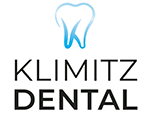What is it?
Periodontal disease is a disease of the gum and bone tissues, which is for the most part is caused by bacteria found in plaque. Plaque, the combination of bacteria and food, is constantly being created and must be removed frequently to maintain optimum oral health. The bacterial byproducts found in plaque function in irritating the periodontal tissues and can cause them to appear inflamed (gingivitis). The inflammation also causes an increase in pocket depth, which is the measurement between the gingival marginal tissue and the depth of the gingival sulculus. These pockets are measured as part of our comprehensive oral exam. Measurements of greater than 3mm indicate gingival inflammation. Periodontal disease affects 75% of people over the age of 35, and is the most common cause of tooth loss. It is important to note that periodontitis is always preceeded by gingivitis, however not all gingivitis proceeds to periodontitis. The initiation and progress of gingivitis and periodontitis is determined by the host response to the bacteria in dental plaque, and home care. Contributing to the difficulty in maintaining optimum oral health is the formation of calculus, which is calcified dental plaque. Calculus is dense, hard, and strongly adhered to the cementum of teeth. Its irregular surface is covered by bacteria, and is very difficult to remove. Calculus is the most important local modifying factor for gingivitis and periodontitis. Its removal is considered an essential aspect of periodontal therapy.
What are the stages and symptoms, and treatments?
Gingivitis:
Gingivitis by definition is the inflammation of the gingiva. Gingivitis can be diagnosed based on bleeding on probing along the gingival margin. Clinical signs of gingivitis include:
- red, swollen or enlarged gums
- rolled margins
- blunted papilla
- and possibly suppuration of pus.
Gingivitis is reversible with regular dental cleanings, and improved oral hygiene. During gingivitis, there is no bone loss or destruction of supporting tissues. A patient may report sore bleeding gums, and bad breath as a result of gingivitis.
- Treatment includes:
- oral hygiene instruction
- scaling and root planning
- polishing
- recall appointments at 3-6 month intervals
Chronic Periodontitis:
Chronic periodontitis by definition involves inflammation of the supporting tissues of the teeth. In addition, destructive changes in the tissues leading to loss of bone and periodontal ligament have taken place. This is a relatively slow process and usually involves long standing poor oral hygiene. However, other factors can impact on the extent of periodontal disease including smoking, nutrition, medications, and diabetes.
Clinical signs and symptoms for chronic periodontitis include:
- Foul taste
- Bad breath
- Sensitivity
- Pocket measurements of greater than 3 mm (attachment loss)
- Tooth mobility
- Migration of teeth
- Furcation involvement (being able to detect the spaces in between the roots)
The disease process progresses by bursts of activity followed by periods of stability. Individual susceptibility is quite diverse, with specific risk factors influencing susceptibility.
Treatment includes:
- oral hygiene instruction
- scaling and root planning
- polishing
- Oral mouth rinses
- recall appointments at 3-6 months
- possible surgical approach if significant periodontal pockets are still present at re-evaluation
- possible referral to a periodontist
Aggressive periodontitis:
Aggressive periodontitis by definition indicates that the patient’s disease appears to be more severe or progressive than would be expected. It usually involves altered immunoinflammatory response, and generally means that at least one third of the periodontal support for a tooth has been destroyed.
Clinical signs and symptoms for aggressive periodontitis include:
- Foul taste
- Bad breath
- Sensitivity
- Pocket measurements of greater than 3 mm (attachment loss)
- Tooth mobility
- Migration of teeth
- Furcation involvement (being able to detect the spaces in between the roots)
- Deep pockets of 6 mm or greater
- Bursts of active disease occur frequently
Treatment includes:
- oral hygiene instruction
- scaling and root planning
- polishing
- antibiotic prescriptions/ oral mouth rinses
- recall appointments at 3-6 month intervals
- possible surgical approach if significant periodontal pockets are still present at re-evaluation
- referral to a periodontist
What should I expect at my dental appointment?
In order to properly diagnose gingival disease and confirm gingival health, as part of our comprehensive oral exam, periodontal probing is conducted. In addition, a full mouth series of radiographs is taken to adequately identify bone level, and attachment level. In addition during the exam, bleeding, swelling, and movements of teeth and sensitivity are assessed.
How can I properly take care of my teeth?
Proper home care involves brushing two times a day, and flossing once a day at the minimum. We recommend using the modified bass technique. Which involves starting at the gum line and brushing away from the gums. It is very important not to scrub your teeth along the check side as it may contribute to gingival recession and tooth brush abrasion. Tooth brushing should take about 2 minutes at each session. Flossing is recommended in the evening. It is very important that once your brush your teeth in the evening that no more food is ingested.
Among the causes for periodontal (gum) disease are genetic susceptibility, smoking, and other illnesses like diabetes. Periodontal maintenance involves removing plaque and tartar from above and below the gum line. Most gum diseases are preventable with proper oral hygiene. However, what can start out as gingivitis (inflamed or bleeding gums) can quickly turn into periodontitis. In such cases, gums pull away from the tooth to create “pockets,” thereby exposing a dental root to infection. It can also lead to prolonged bad breath, loose teeth, painful chewing and other complications.
